The Kubota 3-Cylinder Diesel Injection Pump is a critical component ensuring precise fuel delivery‚ essential for optimal engine performance‚ fuel efficiency‚ and overall reliability;
1․1 Overview of the Kubota 3-Cylinder Diesel Engine
The Kubota 3-Cylinder Diesel Engine is a compact‚ lightweight‚ and highly efficient power unit designed for reliability and durability․ Known for its robust performance‚ it is widely used in agricultural machinery‚ construction equipment‚ and industrial applications․ The engine features a simple yet durable design‚ ensuring minimal maintenance and long service life․ Its fuel-efficient operation and smooth power delivery make it a preferred choice for various small to medium-scale operations․ This engine’s reputation for dependability has made it a cornerstone in Kubota’s lineup․
1․2 Importance of the Injection Pump in Diesel Engines
The injection pump is vital for delivering fuel to the engine’s cylinders with precise timing and pressure‚ ensuring efficient combustion․ It meters fuel accurately‚ preventing issues like poor performance or engine damage․ Unlike gasoline engines‚ diesel engines rely on fuel injection for combustion‚ necessitating the pump’s accuracy․ It also primes the fuel system‚ preventing air leaks that cause no-start conditions․ The pump works with the engine’s timing mechanism to synchronize fuel injection‚ crucial for performance and emissions․ Regular maintenance‚ like cleaning injectors and bleeding air‚ is essential for longevity․ Addressing fuel leaks and contamination ensures system integrity‚ making the injection pump indispensable for diesel engine operation․
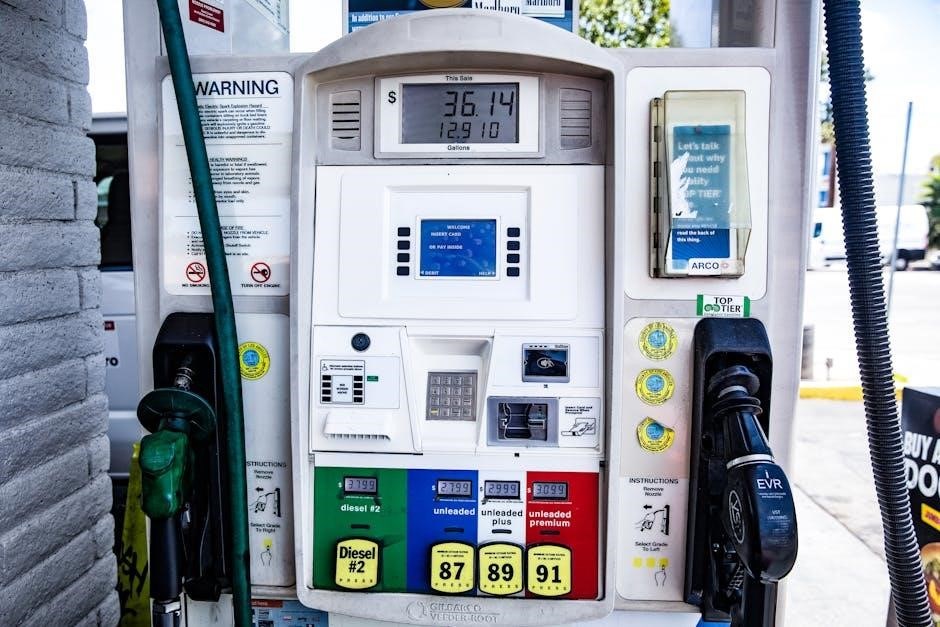
Key Components of the Kubota 3-Cylinder Diesel Injection Pump
The Kubota 3-Cylinder Diesel Injection Pump comprises fuel injectors‚ low-pressure and high-pressure fuel pumps‚ a governor‚ and a timing mechanism․ These components work together to deliver fuel precisely‚ ensuring efficient combustion and engine performance․ The injectors spray fuel into the cylinders‚ while the pumps pressurize and supply fuel․ The governor regulates fuel flow for speed control‚ and the timing mechanism synchronizes injection with engine cycles‚ crucial for optimal operation․
2․1 Fuel Injectors and Their Role
Fuel injectors in the Kubota 3-Cylinder Diesel Injection Pump are crucial for delivering pressurized fuel directly into the engine cylinders․ They ensure precise fuel spray patterns for efficient combustion․ Clean injectors are essential to maintain proper engine performance‚ as contamination can lead to poor fuel atomization and reduced power output․ Regular maintenance‚ such as cleaning or replacing clogged injectors‚ is vital to prevent engine issues like rough running or no-start conditions․ Proper injector function ensures optimal fuel efficiency and reliability․
2․2 Low-Pressure Fuel Pump and Its Function
The low-pressure fuel pump plays a vital role in the Kubota 3-Cylinder Diesel Injection Pump system by transferring fuel from the tank to the high-pressure pump․ It ensures a steady fuel supply‚ preventing starvation and maintaining system pressure․ Located in the fuel line‚ this pump operates at a lower pressure‚ priming the system and removing air pockets․ Its function is essential for smooth engine operation‚ as failure can lead to no-start conditions or rough running․ Regular checks and maintenance are crucial to ensure reliable performance․
2․3 High-Pressure Fuel Pump and Its Components
The high-pressure fuel pump is a critical component of the Kubota 3-Cylinder Diesel Injection Pump system‚ responsible for pressurizing fuel to the required levels for efficient combustion․ It consists of a piston and cylinder assembly‚ delivery valves‚ and a camshaft-driven mechanism․ These components work in harmony to generate the extreme pressures needed for fuel injection․ Proper maintenance‚ including cleaning and replacing worn parts‚ is essential to ensure consistent performance and prevent fuel system failures․ Regular inspection of the pump’s components is vital for long-term reliability․
2․4 Governor and Timing Mechanism
The governor and timing mechanism are essential for regulating fuel delivery and ensuring proper injection timing in the Kubota 3-Cylinder Diesel Injection Pump․ The governor adjusts fuel flow based on engine speed and load‚ maintaining optimal performance․ The timing mechanism synchronizes fuel injection with piston movement‚ critical for efficient combustion․ Thin shims under the pump control timing accuracy‚ and losing them can disrupt engine operation․ Proper alignment and secure installation are vital to maintain precise fuel delivery and overall engine efficiency․
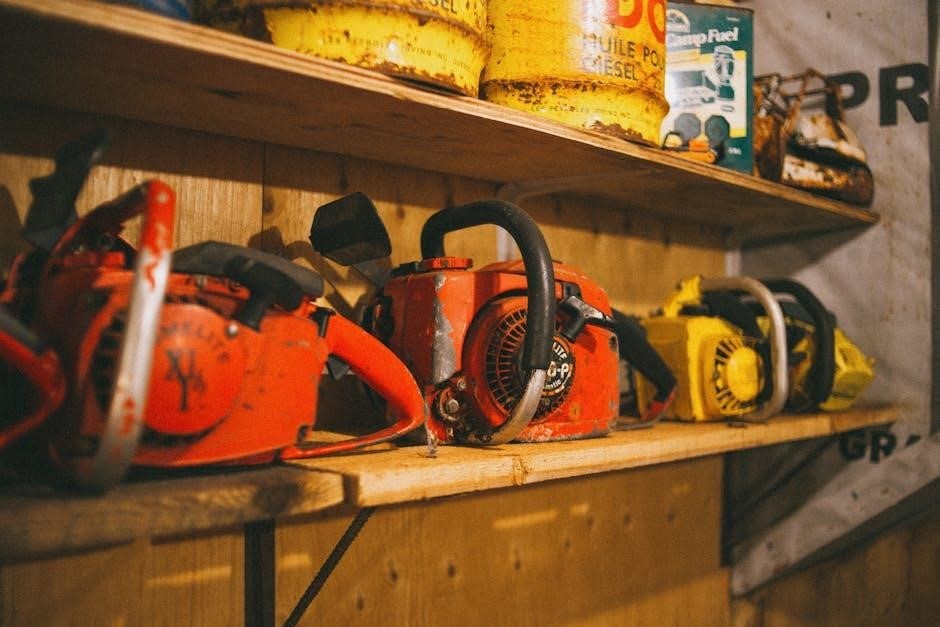
Installation Procedures for the Injection Pump
Align the injection pump with the engine‚ secure it with bolts‚ and ensure proper shim placement․ Engage the throttle control and tighten all connections firmly for optimal function․
3․1 Pre-Installation Checks and Preparations
Before installing the injection pump‚ inspect all fuel lines and connections for damage or leaks․ Prime the fuel system to ensure no air pockets remain․ Clean the engine block and pump mounting surface thoroughly․ Verify the torque specifications for bolts and connections․ Ensure the governor and timing mechanisms are properly aligned․ Check for any worn or damaged components‚ such as shims or seals‚ and replace them if necessary․ Use a service jig to maintain proper alignment during installation․ Always refer to the manual for specific preparation steps to avoid misalignment or damage․
3․2 Aligning the Injection Pump with the Engine
Proper alignment of the injection pump with the engine is crucial for smooth operation․ Use shims and a service jig to ensure the pump is correctly positioned․ Engage the rack pin with the governor connecting rod‚ ensuring it moves freely․ Align the mounting surfaces and verify the pump’s rotation matches the engine’s timing․ Tighten bolts gradually‚ following torque specifications․ Ensure the fuel delivery valve aligns with the cylinder head for proper fuel injection timing․ Misalignment can lead to poor performance or pump failure․
3․3 Securing the Injection Pump to the Engine Block
Secure the injection pump to the engine block using the provided bolts‚ ensuring a tight seal with a new gasket․ Apply a small amount of sealant to the mounting surface for added protection․ Tighten the bolts in a star pattern‚ following the manufacturer’s torque specifications (typically 30-40 Nm)․ Double-check the alignment and ensure all connections are secure․ Properly tightening prevents leaks and ensures optimal performance․ If misaligned or loose‚ it can lead to poor engine performance or pump damage․
3․4 Connecting Fuel Lines and Electrical Connectors
Connect the fuel supply and return lines to the injection pump‚ ensuring they are securely tightened to the manufacturer’s torque specifications (typically 15-20 Nm)․ Attach the electrical connectors to the pump’s solenoid and sensors‚ making sure they are firmly seated․ Use new fuel line seals to prevent leaks․ Double-check all connections for tightness and proper routing․ Avoid over-tightening‚ as this could damage the threads or connectors․ Properly connected fuel lines and electrical connectors are vital for reliable fuel flow and precise engine control․

Maintenance and Servicing of the Injection Pump
Regular cleaning‚ inspection‚ and servicing ensure optimal performance and extend the injection pump’s lifespan․ Follow the manual’s guidelines for routine maintenance and repairs․
4․1 Regular Cleaning and Inspection of Fuel Injectors
Regular cleaning and inspection of fuel injectors are crucial for maintaining optimal engine performance․ Use pressurized diesel to flush out contaminants and check for wear or damage․ Inspect the injector nozzles for clogging or corrosion‚ as these can disrupt fuel flow and combustion efficiency․ Replace worn or damaged components promptly to prevent engine issues․ Always follow the manual’s guidelines for proper cleaning techniques and safety precautions to ensure reliability and longevity of the injection system․
4․2 Replacing the Fuel Injector Nozzles
Replacing fuel injector nozzles is essential for restoring optimal engine performance and efficiency․ Begin by disassembling the injector‚ taking care to remove the old nozzle․ Inspect for wear or damage‚ and install a new nozzle‚ ensuring proper seating and alignment․ Tighten according to specifications to avoid leaks․ Reassemble the injector and test the engine to confirm proper function․ Always use genuine replacement parts and follow manual guidelines for precise installation and torque settings to maintain engine reliability and performance․
4․3 Bleeding Air from the Fuel System
Bleeding air from the fuel system is crucial after replacing components or when air enters the lines․ Use the manual primer pump to remove air bubbles‚ ensuring fuel flows freely․ Loosen injector lines slightly and crank the engine until fuel emerges without air․ Tighten lines once fuel flows steadily․ Repeat if necessary to eliminate all air pockets․ This process ensures proper fuel delivery and prevents engine start-up issues․ Always follow the manual’s guidelines for effective bleeding and system priming․
4․4 Checking and Replacing Fuel Filters
Regularly inspect fuel filters for contamination or clogging․ Check both primary and secondary filters as outlined in the manual․ If clogged‚ replace immediately to avoid engine performance issues․ To replace‚ turn off the engine‚ relieve fuel pressure‚ and remove the old filter․ Install a new one ensuring the gasket is properly seated․ After replacement‚ bleed the fuel system to eliminate air bubbles․ Always use genuine Kubota filters to maintain optimal performance and longevity․ Dispose of used filters responsibly;
Troubleshooting Common Issues
Common issues include no-start conditions‚ low power‚ and rough running․ These are often caused by air in the system‚ faulty injectors‚ or contaminated fuel․ Always consult the manual for detailed troubleshooting steps․
5․1 Diagnosing No-Start Conditions
No-start conditions often stem from issues like air in the fuel system‚ faulty injectors‚ or a malfunctioning low-pressure fuel pump․ Begin by checking fuel flow to the injection pump and ensuring all lines are secure․ If fuel reaches the pump but the engine won’t start‚ inspect the injectors for blockages or damage․ Consult the manual for specific diagnostic steps‚ such as using a service jig to test pump performance․ Addressing contamination or priming the system may resolve the issue․ Always refer to the manual for precise troubleshooting guidance․
5․2 Identifying Low Power or Rough Running Issues
Low power or rough running issues in the Kubota 3-Cylinder Diesel Engine often stem from faulty fuel injectors‚ incorrect injection timing‚ or a malfunctioning governor․ Inspect the injectors for wear or blockages and ensure proper fuel flow․ Check the timing mechanism for alignment with engine specifications‚ as outlined in the manual․ Use a service jig to test the injection pump’s performance․ Addressing these issues promptly prevents further damage and restores optimal engine performance․ Always refer to the manual for precise diagnostic and repair guidance․
5․3 Repairing or Replacing the Injection Pump
Repairing or replacing the Kubota 3-Cylinder Diesel Injection Pump requires careful planning and adherence to manual guidelines․ If damaged‚ disassemble the pump to inspect internal components such as the plunger‚ barrel‚ and delivery valve․ Replace worn or faulty parts with genuine Kubota components․ Reassembly must follow precise torque and timing specifications to ensure proper fuel delivery․ If repair is complex‚ consider professional servicing or purchasing a rebuilt unit to maintain engine performance and longevity․ Always prioritize manufacturer-recommended practices for reliable outcomes․
5․4 Addressing Fuel Leaks and Contamination
Fuel leaks and contamination can severely impact the performance and longevity of the Kubota 3-Cylinder Diesel Injection Pump․ Inspect fuel lines‚ connections‚ and O-rings for signs of wear or damage․ Replace any compromised components immediately․ Contamination can be addressed by bleeding the fuel system thoroughly․ Use a pressure testing kit to identify and resolve leaks․ Regularly servicing the fuel filters and ensuring clean fuel delivery will help prevent future issues․ Always follow manual guidelines for proper diagnostic and repair procedures to maintain optimal engine operation․
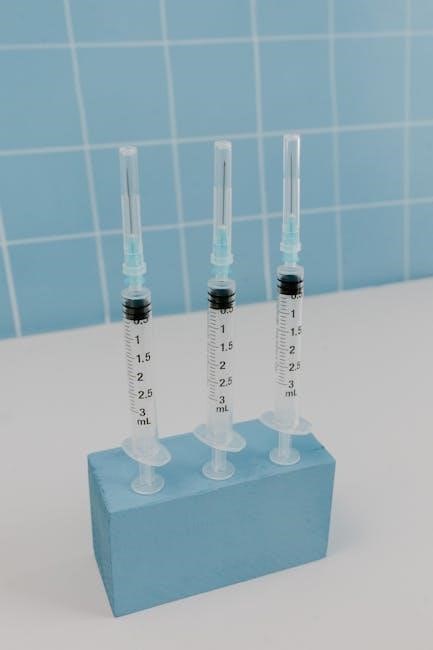
Technical Specifications and Compatibility
The Kubota 3-Cylinder Diesel Injection Pump is compatible with select engine models‚ operating at specified fuel pressures and flow rates to ensure optimal performance and reliability․
6․1 Compatibility with Kubota Engine Models
The Kubota 3-Cylinder Diesel Injection Pump is compatible with various Kubota engine models‚ including the D1105‚ V3300-E2B‚ and B8200 HST․ Proper installation ensures optimal performance across these engines․ Always verify compatibility with your specific engine model using the manual to avoid installation issues․ Correct alignment and torque specifications are crucial for ensuring reliability and longevity of the injection pump and engine․ Proper setup guarantees efficient fuel delivery and overall engine operation․ Always refer to the manual for precise compatibility and installation guidelines․
6․2 Fuel Pressure and Flow Rate Specifications
The Kubota 3-Cylinder Diesel Injection Pump operates within specific fuel pressure and flow rate parameters to ensure optimal engine performance․ Low-pressure fuel systems typically range between 5-10 psi‚ while high-pressure systems can reach up to 25‚000 psi․ Flow rates are carefully calibrated to deliver the correct amount of fuel for efficient combustion; Adhering to these specifications is critical to avoid poor engine performance‚ excessive fuel consumption‚ or potential damage to the injection system․ Always consult the manual for precise values tailored to your engine model․
6․3 Torque and Timing Specifications
The Kubota 3-Cylinder Diesel Injection Pump requires precise torque and timing specifications for optimal performance․ The injection pump bolts typically require 30-40 Nm of torque‚ while timing adjustments must align with the engine’s crankshaft position․ Proper timing ensures synchronized fuel delivery‚ maximizing efficiency and power․ Consult the manual for exact values‚ as variations exist across models․ Incorrect settings can lead to poor engine performance or damage‚ emphasizing the need for accurate calibration using specialized tools like a torque wrench and timing jig․

The Role of the Injection Pump Manual
The Kubota 3-Cylinder Diesel Injection Pump Manual is an essential resource for professionals and DIYers‚ providing detailed insights into fuel delivery systems and pump functionality for optimal performance and longevity․
7․1 Understanding the Manual’s Content and Structure
The Kubota 3-Cylinder Diesel Injection Pump Manual is structured to guide users through installation‚ maintenance‚ and troubleshooting․ It includes detailed diagrams‚ step-by-step instructions‚ and technical specifications․ The manual begins with an overview of the injection pump system‚ followed by sections on disassembly‚ assembly‚ and adjustment procedures․ Additional chapters cover diagnostic techniques‚ common issues‚ and repair methods․ Appendices provide torque specifications‚ wiring diagrams‚ and replacement part numbers․ This comprehensive layout ensures users can navigate easily‚ making it an indispensable resource for professionals and DIY enthusiasts alike․
7․2 Using the Manual for DIY Repairs and Maintenance
The Kubota 3-Cylinder Diesel Injection Pump Manual is an invaluable resource for DIY repairs and maintenance․ It provides detailed‚ step-by-step instructions for disassembling‚ inspecting‚ and reassembling the injection pump․ The manual includes safety tips‚ tool recommendations‚ and troubleshooting guides‚ empowering users to address common issues independently․ By following the manual’s guidance‚ individuals can perform routine maintenance‚ such as cleaning fuel injectors and replacing worn components‚ ensuring optimal engine performance and extending the pump’s lifespan․ Proper use of the manual helps prevent costly mistakes and ensures repairs are done safely and effectively․
7․3 Importance of Adhering to Manufacturer Guidelines
Adhering to the manufacturer’s guidelines in the Kubota 3-Cylinder Diesel Injection Pump Manual is crucial for ensuring proper installation‚ maintenance‚ and repair․ Deviating from these instructions can lead to poor engine performance‚ reduced fuel efficiency‚ or even permanent damage to the pump․ The manual provides precise specifications‚ such as torque values and timing settings‚ which are essential for maintaining the engine’s integrity․ By following the guidelines‚ users can ensure safety‚ optimal functionality‚ and longevity of the injection pump and engine․ Proper adherence also helps prevent voiding warranties and reduces the risk of costly repairs․
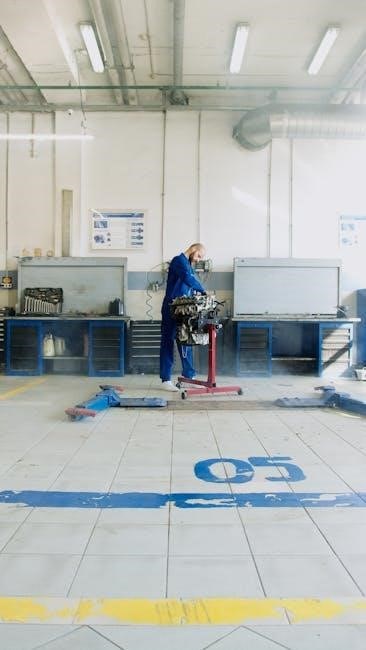
Fuel System Setup and Configuration
The Kubota 3-Cylinder Diesel Injection Pump requires precise fuel system setup‚ including proper fuel tank installation‚ fuel line routing‚ and priming procedures to ensure optimal engine performance and efficiency․
8․1 Fuel Tank and Fuel Line Requirements
The Kubota 3-Cylinder Diesel Injection Pump requires a fuel tank with adequate capacity and proper venting to prevent vacuum issues during operation․ Fuel lines must be sized correctly to ensure unrestricted flow‚ and they should be made of durable‚ fuel-resistant materials․ Proper routing of fuel lines away from heat sources and moving components is essential to prevent damage․ Additionally‚ a fuel strainer or filter should be installed to protect the injection pump from contaminants․ Secure connections and regular inspections are critical to maintain system integrity and performance․
8․2 Priming the Fuel System After Pump Replacement
Priming the fuel system after replacing the injection pump is essential to remove air and ensure proper fuel flow; Use a manual pump or pressurized diesel to feed fuel into the pump‚ then rotate the crankshaft until the delivery valve closes‚ indicating fuel flow without air bubbles․ Proper alignment of the injection pump with the engine timing is crucial․ Bleed the system thoroughly to eliminate any remaining air pockets‚ ensuring smooth engine operation․ Follow the manual’s specific instructions for priming to avoid damage or performance issues․
8․3 Adjusting Fuel Injection Timing
Adjusting fuel injection timing is crucial for optimal engine performance․ Use shims to set the correct timing‚ ensuring proper fuel delivery․ Refer to the manual for specific torque and alignment instructions․ Install the pump with care‚ engaging the rack pin and throttle control․ Misalignment can cause low power or rough running․ Always use service jigs for accuracy․ Proper timing ensures efficient combustion and prevents engine damage‚ guaranteeing smooth operation and maintaining engine longevity․ Follow the manual’s guidelines precisely for best results․
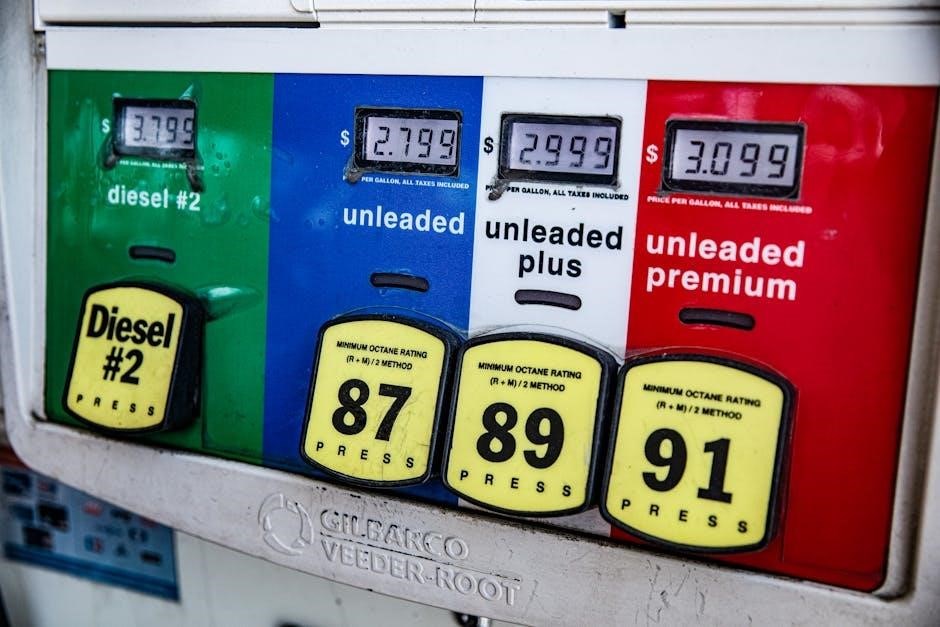
Safety Precautions and Best Practices
Always wear protective gear when handling fuel and high-pressure components; Use tools safely and work in a well-ventilated area to avoid hazardous fumes and sparks․
9․1 Handling Fuel and High-Pressure Components Safely
When working with fuel and high-pressure components‚ wear protective gloves and eyewear․ Ensure the area is well-ventilated to avoid inhaling fumes․ Avoid sparks or open flames near fuel․ Handle high-pressure lines with care to prevent sudden releases‚ which can cause injury․ Use approved tools and follow proper bleeding procedures to remove air safely․ Never tamper with pressure settings without consulting the manual․ Keep loose clothing tied back and avoid overreaching․ Always shut off the engine and relieve pressure before servicing․
9․2 Proper Use of Tools and Equipment
Use torque wrenches for precise bolt tightening to avoid damage․ Pressure testing kits ensure fuel system integrity․ Service jigs and alignment tools help maintain component accuracy․ Always follow the manufacturer’s guidelines for tool usage․ Regularly calibrate tools to ensure precision․ Wear protective gear when handling tools․ Use the correct size and type of tools to prevent component damage․ Keep tools clean and well-maintained for optimal performance․ Refer to the manual for specific tool recommendations and usage techniques to ensure safe and effective servicing․
9․3 Working in a Well-Ventilated Environment
Always work in a well-ventilated area to prevent inhaling harmful fumes․ Diesel fuel and combustion byproducts can be hazardous․ Ensure good airflow to avoid carbon monoxide buildup․ Open windows or use fans to circulate air․ Avoid working in confined spaces without proper ventilation․ This reduces health risks and ensures a safer working environment․ Proper ventilation also prevents explosive atmospheres from forming‚ enhancing overall safety during maintenance or repair tasks․

Special Tools and Equipment Required
Special tools like a fuel injection pump test bench‚ pressure testing kit‚ and service jigs are essential for accurate diagnostics‚ repairs‚ and alignment of the injection pump system․
10․1 Fuel Injection Pump Test Bench
A fuel injection pump test bench is a specialized tool used to diagnose and calibrate the Kubota 3-Cylinder Diesel Injection Pump․ It allows for precise testing of fuel flow‚ pressure‚ and delivery patterns․ The bench simulates real engine conditions‚ ensuring accurate performance measurements․ By using this equipment‚ technicians can identify faults‚ adjust timing‚ and verify repairs․ It is essential for maintaining optimal engine performance and preventing future issues․ Proper use of the test bench aligns with manufacturer guidelines‚ ensuring reliability and longevity of the injection pump system․
10․2 Pressure Testing Kit
A pressure testing kit is essential for diagnosing fuel system leaks and verifying pressure integrity in the Kubota 3-Cylinder Diesel Injection Pump․ The kit includes adapters‚ hoses‚ and gauges to simulate operating conditions․ It helps identify leaks in fuel lines‚ injectors‚ or pump seals․ Regular pressure testing ensures optimal fuel delivery and prevents engine damage․ This tool is crucial for maintaining system efficiency and aligns with manufacturer-recommended practices for troubleshooting and servicing the injection pump and related components․
10․3 Service Jigs and Alignment Tools
Service jigs and alignment tools are essential for precise installation and maintenance of the Kubota 3-Cylinder Diesel Injection Pump․ These specialized tools ensure accurate alignment of components‚ such as the pump and engine timing․ They are used to securely position the injection pump and verify proper fitment․ Service jigs help maintain fuel delivery efficiency and engine performance․ Proper alignment prevents damage during repairs and ensures optimal functionality․ These tools are integral to both professional and DIY servicing‚ aligning with manufacturer guidelines for precise and reliable maintenance․
The Kubota 3-Cylinder Diesel Injection Pump Manual is a vital resource‚ offering comprehensive guidance for optimal engine performance and longevity․ It empowers professionals and DIY enthusiasts alike‚ ensuring precise fuel delivery and trouble-free operation through detailed procedures and expert insights․
11․1 Summary of Key Points
The Kubota 3-Cylinder Diesel Injection Pump Manual provides essential insights for installation‚ maintenance‚ and troubleshooting․ It emphasizes proper fuel system setup‚ timing adjustments‚ and safety practices․ Regular cleaning of fuel injectors‚ replacing nozzles‚ and bleeding air from the system are highlighted as critical maintenance tasks․ Additionally‚ the manual underscores the importance of using specialized tools like pressure testing kits and service jigs․ By adhering to the guidelines‚ users can ensure optimal engine performance‚ reliability‚ and longevity‚ making it a indispensable resource for professionals and DIY enthusiasts alike․
11․2 Encouragement for Further Reading and Practice
For a deeper understanding‚ explore the Kubota 3-Cylinder Diesel Injection Pump Manual thoroughly․ Hands-on practice with specialized tools like pressure testing kits and service jigs is highly recommended․ Engage with online forums and communities to share experiences and gain insights․ Supplement your knowledge with recommended repair manuals and manufacturer guidelines for comprehensive expertise․ Continuous learning and practical application will enhance your proficiency in maintaining and repairing the injection pump‚ ensuring optimal engine performance and longevity․

Additional Resources and References
Consult the Kubota 3-Cylinder Diesel Injection Pump Manual for detailed procedures․ Explore online forums‚ manufacturer support‚ and repair guides for additional insights and troubleshooting tips․
12․1 Recommended Repair Manuals and Guides
For comprehensive guidance‚ refer to the official Kubota 3-Cylinder Diesel Injection Pump Manual‚ which includes detailed repair procedures‚ diagrams‚ and troubleshooting tips․ Additionally‚ seek out authorized service manuals‚ parts catalogs‚ and technical bulletins from Kubota or reputable third-party publishers․ These resources provide step-by-step instructions for diagnosing and fixing issues‚ ensuring accurate repairs․ Digital versions are often available for convenience‚ offering searchable content and easy access to critical information for maintaining your engine’s performance and longevity․
12․2 Online Forums and Communities
Online forums and communities‚ such as Reddit’s r/Kubota or specialized tractor forums‚ offer valuable peer support and DIY repair insights․ These platforms share real-world experiences‚ troubleshooting tips‚ and solutions for common issues with the Kubota 3-Cylinder Diesel Injection Pump․ Participants often discuss manual recommendations‚ tools‚ and techniques‚ providing practical advice for both professionals and enthusiasts․ Engaging with these communities can enhance your understanding and problem-solving skills‚ connecting you with experts and enthusiasts worldwide․
12․3 Manufacturer Support and Contact Information
Kubota provides comprehensive support through their official website‚ customer service hotline‚ and email․ Visit their site for detailed manuals‚ parts catalogs‚ and troubleshooting guides․ Contact their support team directly for technical assistance or to locate authorized service centers․ Genuine Kubota parts and accessories ensure optimal performance․ Manufacturer support offers reliable solutions for maintenance‚ repairs‚ and warranty inquiries‚ helping you maintain your engine’s longevity and efficiency with certified expertise and resources․